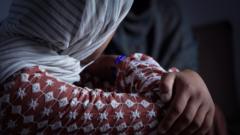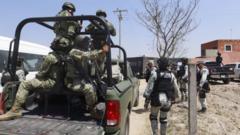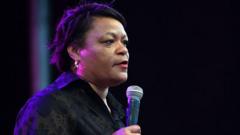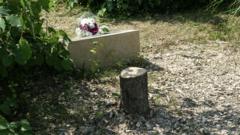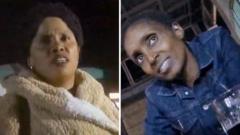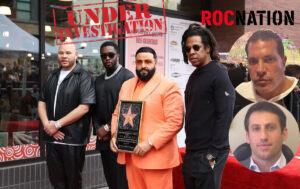Following a thorough investigation that spanned over three years, BBC journalist Rianna Croxford sheds light on the alleged abusive practices at the helm of Abercrombie & Fitch, resulting in federal charges against its former CEO Mike Jeffries for sex trafficking. The article also emphasizes the greater issue of systemic silence around male-oriented harassment and exploitation.
Investigative Reporting Uncovers Sex Trafficking Charges Against Former Abercrombie CEO Mike Jeffries

Investigative Reporting Uncovers Sex Trafficking Charges Against Former Abercrombie CEO Mike Jeffries
A probe by BBC journalist Rianna Croxford leads to the arrest of Mike Jeffries, unveiling a complex international sex trafficking network associated with the fashion mogul and highlighting the challenges of reporting on sensitive subject matter.
In a New York federal courtroom, I watched as Mike Jeffries, the former CEO of Abercrombie & Fitch, faced charges stemming from a sweeping investigation I conducted over three years for the BBC. The FBI's recent arrests included Jeffries, his British partner Matthew Smith, and their associate James Jacobson, all accused of orchestrating an international sex trafficking ring targeting young men.
My investigation was ignited back in January 2021, when I came across a striking Instagram comment from Barrett Pall, a former male model. In a discussion on male exploitation in the modeling world, he hinted at dark experiences that had largely gone unreported. Intrigued, I immediately reached out to him.
Pall shared a harrowing secret about how, at just 22, he was recruited for a "tryout" by Jacobson, who later took him to an extravagant event hosted by Jeffries and Smith. The narration echoed a pattern where vulnerable young men were lured under false pretenses, finding themselves in compromising and abusive situations.
My reporting journey took me across the country, engaging with models and insiders who could shed light on a culture of exploitation shrouded in shame and silence. Despite the common narrative that abuse is often a topic hard to broach, many of the men I encountered expressed feeling isolated in their experiences, either due to fear of retribution or crippling guilt.
Notably, one key breakthrough in the investigation arose from Pall's old iPad, which, once fixed, revealed crucial itineraries associated with the events held by Jeffries and Smith. It took months of painstaking tracking and careful interviewing to compile a comprehensive picture of the operations and the men involved.
What became clear through my encounters is that the deep shame surrounding male sexual exploitation often silenced victims long after the events had transpired. Some described feelings of despair, while others spoke of suicide attempts. The narrative of abuse targeted not only their physical well-being but left profound emotional scars that persisted over time.
As my findings neared publication, the implications grew ever more serious. Multiple sources explicitly confirmed the use of intimidation tactics to dissuade anyone from surfacing allegations against Jeffries, further exemplifying the lengths to which these individuals went to maintain their dominion and silence.
The culmination of my investigation led to a variety of repercussions, as lawsuits began emerging against Jeffries and Smith, alleging sexual assault and trafficking activities during their tenure. After years of hidden truths, the indicted men face grave consequences, including a potential life sentence if convicted.
U.S. attorney Breon Peace articulated the necessary urgency in addressing exploitation within the modeling industry. His words, “This case should serve as a warning,” reflect the broader societal need for accountability, calling into question the dynamic between power and vulnerability that often allows such abuse to persist.
Reflecting on this journey, my interaction with Barrett Pall stands out—his decision to trust me with his painful history led not only to the unearthing of systemic abuse but paved the way for healing and justice for many affected. As the courtroom proceedings evolve, the foundation laid through this investigation may indeed challenge the status quo in modeling, demanding a cultural reckoning that has long been sidelined.

